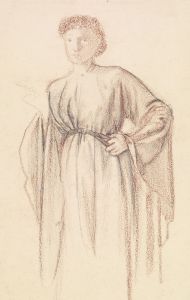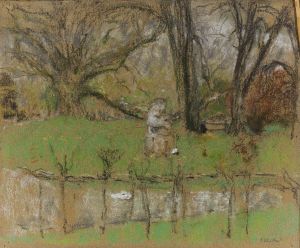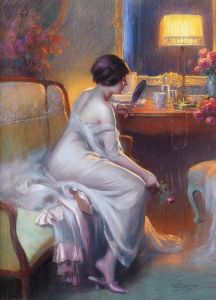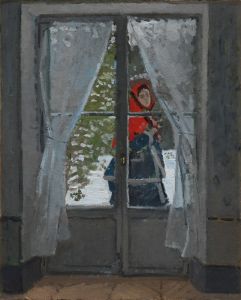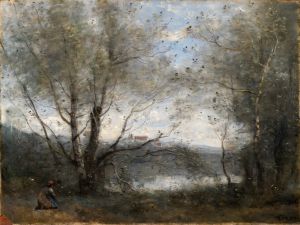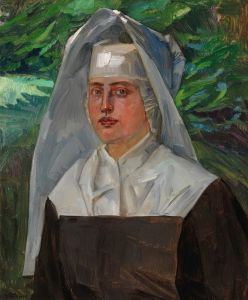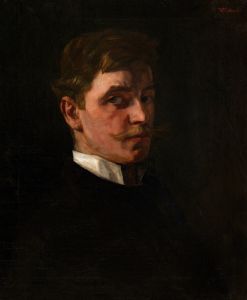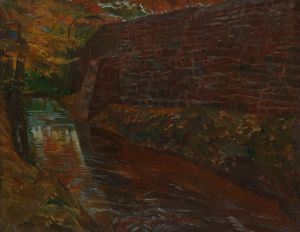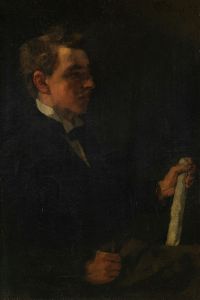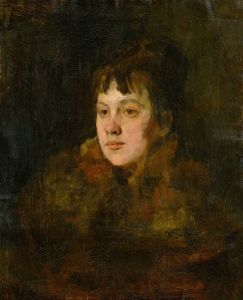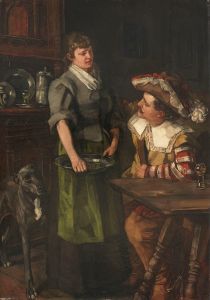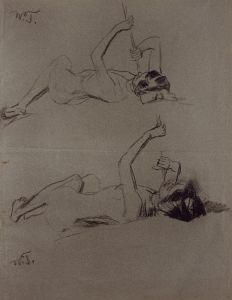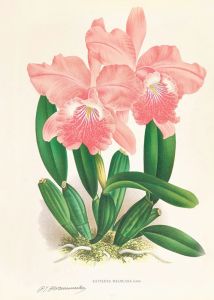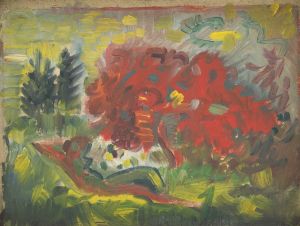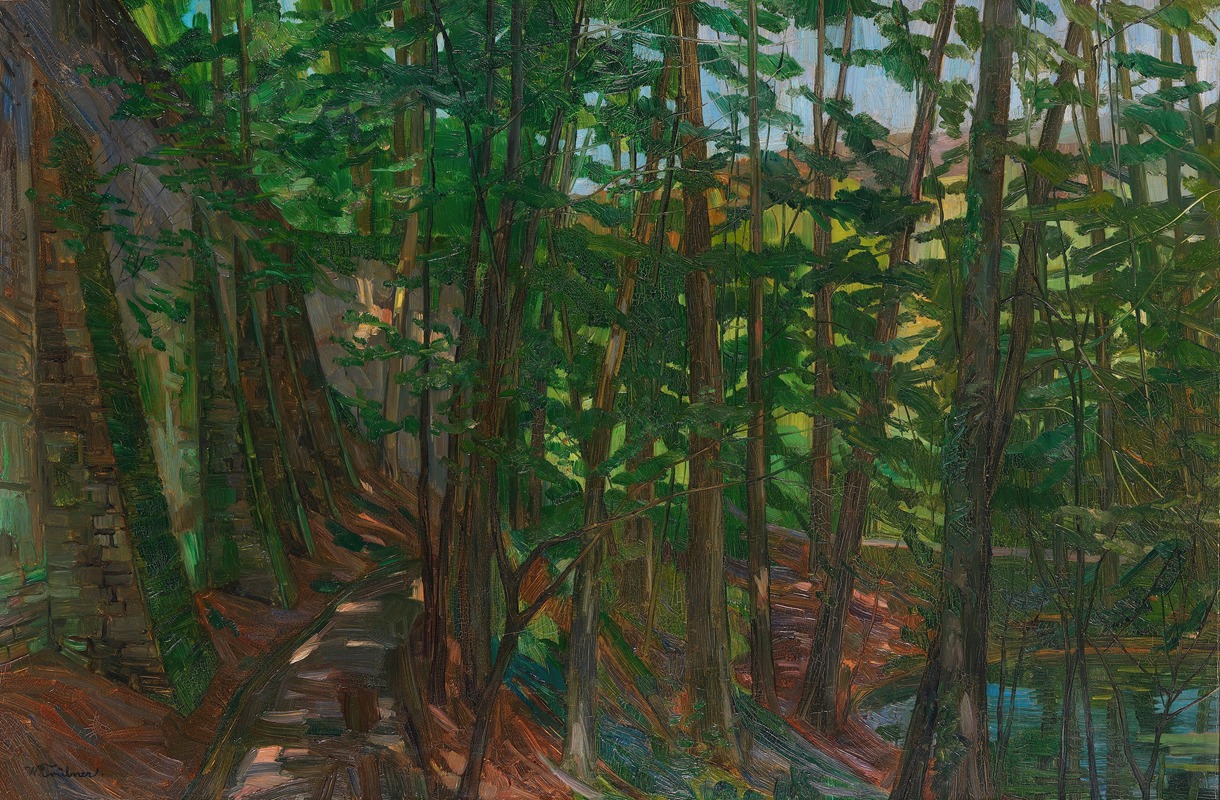
Stift Neuburg, Parkmauer mit Forellenteich II
A hand-painted replica of Wilhelm Trübner’s masterpiece Stift Neuburg, Parkmauer mit Forellenteich II, meticulously crafted by professional artists to capture the true essence of the original. Each piece is created with museum-quality canvas and rare mineral pigments, carefully painted by experienced artists with delicate brushstrokes and rich, layered colors to perfectly recreate the texture of the original artwork. Unlike machine-printed reproductions, this hand-painted version brings the painting to life, infused with the artist’s emotions and skill in every stroke. Whether for personal collection or home decoration, it instantly elevates the artistic atmosphere of any space.
Wilhelm Trübner was a notable German painter associated with the Realist movement, and his work "Stift Neuburg, Parkmauer mit Forellenteich II" is one of his many contributions to landscape painting. Trübner was born on February 3, 1851, in Heidelberg, Germany, and he became known for his ability to capture the essence of his surroundings with a keen eye for detail and a strong sense of composition.
"Stift Neuburg, Parkmauer mit Forellenteich II" translates to "Neuburg Abbey, Park Wall with Trout Pond II." This painting is part of Trübner's exploration of the landscapes around Heidelberg, where he spent a significant portion of his life. Neuburg Abbey, or Stift Neuburg, is a Benedictine monastery located near Heidelberg, and it provided a rich source of inspiration for Trübner's work. The abbey's scenic surroundings, including its gardens and ponds, offered the perfect setting for Trübner to explore his interest in light, reflection, and natural beauty.
In this particular painting, Trübner focuses on a section of the park wall and a trout pond, capturing the tranquil atmosphere of the abbey's grounds. His use of color and light is characteristic of his style, which often emphasized the natural interplay of sunlight and shadow. The painting likely reflects Trübner's interest in the Realist movement, which sought to depict subjects truthfully and without idealization, focusing on everyday scenes and the beauty found in ordinary settings.
Trübner's technique in this work demonstrates his mastery of brushwork and his ability to convey texture and depth. The way he renders the water in the trout pond, with its reflections and subtle movements, showcases his skill in capturing the ephemeral qualities of nature. The park wall, with its solid structure, contrasts with the fluidity of the pond, creating a balanced composition that draws the viewer's eye across the canvas.
Throughout his career, Trübner was influenced by other artists of the time, including the French Realists and Impressionists, although he maintained a distinct style that set him apart. His work often reflects a deep appreciation for the German landscape and a commitment to portraying it with authenticity and respect.
"Stift Neuburg, Parkmauer mit Forellenteich II" is an example of Trübner's dedication to capturing the serene and contemplative aspects of nature. It stands as a testament to his ability to find beauty in the everyday and to translate that beauty onto canvas with precision and sensitivity. Trübner's paintings continue to be appreciated for their technical excellence and their ability to evoke a sense of place and time, offering viewers a glimpse into the peaceful landscapes of 19th-century Germany.
Wilhelm Trübner passed away on December 21, 1917, in Karlsruhe, Germany, but his legacy endures through his contributions to German art and his influence on subsequent generations of painters. His works, including "Stift Neuburg, Parkmauer mit Forellenteich II," remain significant for their artistic merit and their reflection of the Realist movement's ideals.





